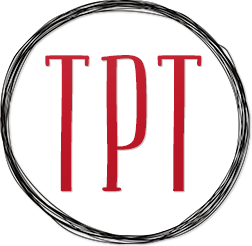I thought I would share how I assess, track and organize fluency in my classroom. I'm by no means an expert, but this works for me. Most of my students (especially the 3rd graders) have fluency as part of their IEP goals. This has been the easiest way for me to monitor their fluency and get them doing repeated readings.
On Mondays, I have students read a fluency passage to me that "should" be on their reading level. I've scoured the web looking for fluency passages. I've used stuff from Reading A to Z and other sites that I've found here and there. I do always retype the passages, because I like them in a certain format.
The first page looks like this:
This is their nightly homework for reading during the week. I don't assign any other reading for them at home. Reading
The Book Whisperer this summer made me reflect on how I feel about reading logs. I did it last year, and it really just became a huge stressor for me. My students never read, and I wasted so much time nagging them everyday about it. This short nightly reading works much better for me. I rarely have a student who doesn't have it signed daily by some adult. Every morning, I just put a quick check mark by the adult's signature and move on.
I also make a page like this for my record keeping:
I keep these in a big 3-ring binder that is divided by student. I make a copy on both sides of the paper, so I can record their reading on Monday and then again on Friday after they have practiced reading it all week.
I've done this every week since the beginning of the year. It does take a bit of time, but I make it work since I feel like this is important. Here's the first passage my 3rd grade students read at the beginning of the year.
Here is the passage from this week that the same student did. The underlined word is their goal they are trying to reach to make a 100. The goal for a first grade passage is 82 wcpm and a second grade passage is 100 wcpm.
WOW, have we come a loooonnnng way this year!!! I also have a graph for each student that I quickly fill in after I do the Monday reading. I show the student and we talk about if they've gone up or down and the general trend.
This is the same student's graph. I'm not going to lie......when I'm feeling really discouraged in my teaching, I come back to these graphs and try to remind myself where we started from. We might not be on grade level but we're definitely making progress!
I do take grades on fluency since the gen ed students get graded on fluency. I took the grading guidelines for 1st and 2nd grade students and broke it down into a grade depending upon how many words are read correctly. I take a grade on the Monday cold read (20% of their grade) and then on the Friday cold read (5% of their grade). We've been given very specific grading guidelines for special ed students, so I've had to play with it some to figure out how to weight them to make the grades average out like the district wants. That's a whole other story though. Here's the chart I use and it's hung up by my reading table so I can look at it quickly.

I don't keep my students all on the same passage. If I see that a student is starting to get As or Bs on the Monday reading and doing it easily, I bump them up to a harder passage. I have 2 levels right now (out of 7 students), but I have 1 who is probably ready to bump up to a beginning of the year 3rd grade passage (yeah!). I'm going to see how he does next week and then make a decision if he needs to move up.
I also provide this info to my parents on weekly report that I send home on Fridays. It looks like this:
That's the kind of reports I like to send home, but it doesn't always work out that way. :/
How do you guys work on fluency in your room? Have you found a good system for tracking it? I realize this works for me, because I'm only doing it with 7 3rd graders. I know there's no way I could do this with a gen ed class of 20 or more. But I love hearing how other people do things in their rooms.
I've also been working on a couple more phonics games. Click on the pictures to check them out in my TPT store.
I noticed my first grade students have been improving when reading CVC words. But when the CVC words have the ending 's' added to the word (like nets or pots), they're really struggling. I wanted to give them some extra word reading these types of words, so I made this cute Rain Forest Friends CVC game.
I also found these really cute baseball graphics and had to use them. I needed another long A game, so I made Play Ball - A Long A game that uses the patterns a_e, ai, and ay.


























































